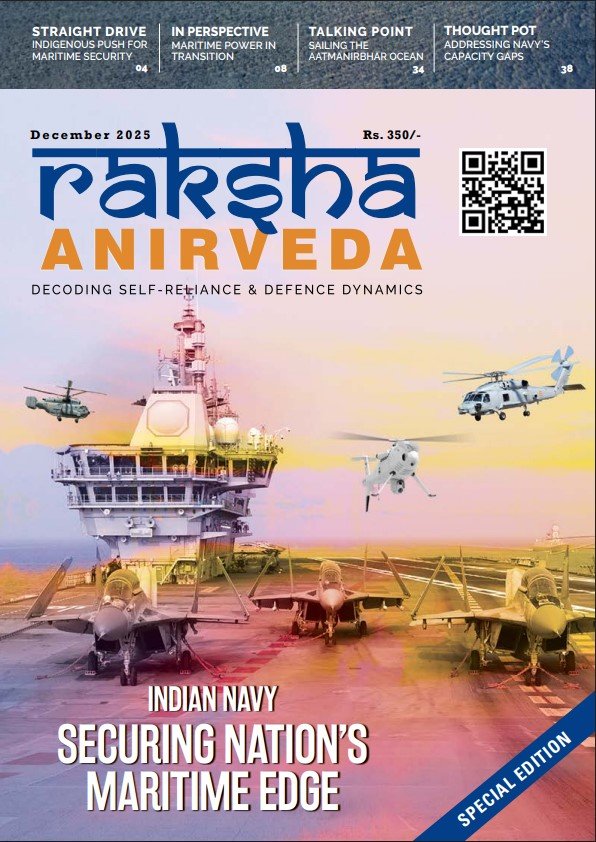New Delhi. India’s Advanced Medium Combat Aircraft (AMCA) stealth fighter programme is progressing toward production, with plans for an initial fleet of around 120 jets for the Indian Air Force (IAF) starting in 2035. The programme is focusing on indigenous stealth design, advanced avionics, and sensor fusion, with two variants planned: the AMCA MK-1, using American engines, and the more powerful AMCA MK-2, featuring a jointly developed engine with France’s Safran.
With per-unit costs estimated at $140 million, the programme entails a projected $18 billion production outlay, marking India’s definitive entry into the exclusive club of fifth-generation stealth fighter manufacturers alongside the United States, Russia, China, and recently Turkey.
The AMCA fills a critical capability gap as China deploys operational J-20 stealth fighters and advances J-35 production for potential Pakistani acquisition. Currently operating only 29 fighter squadrons against the sanctioned 42.5, the IAF urgently requires advanced platforms to maintain regional air superiority.
The AMCA incorporates cutting-edge stealth features through its twin-tail layout, platform edge alignment, serpentine air intakes that conceal engine fan blades, and internal weapons bays. The airframe utilises 38-40% composite materials and radar-absorbent coatings to achieve minimal radar cross-section. Advanced meta-material surface cloaking systems developed by IIT Kanpur further enhance multi-spectral camouflage capabilities.
The 25-ton twin-engine aircraft delivers impressive specifications:
Maximum Speed: 2,600 km/h (Mach 2.15)
Combat Range: 1,620 km
Ferry Range: 5,324 km
Service Ceiling: 20,000 m (65,000 ft)
Payload Capacity: 6,500 kg armament
The AMCA features India’s indigenous Uttam AESA radar with 912 transmit/receive modules, detecting fighter-sized targets beyond 150 kilometres. Advanced sensor fusion capabilities combine active electronically scanned array radar, infrared search and track systems, and AI-powered data integration for enhanced situational awareness. The aircraft incorporates distributed passive sensors with artificial intelligence-assisted multi-sensor data fusion and an integrated vehicle health monitoring system.
The AMCA follows a phased engine approach. Initial MK-1 variants utilise American GE F414-GE-INS6 engines in the 98 kN thrust class, while advanced MK-2 variants will feature more powerful 120 kN indigenous engines.
India has selected Safran of France for joint development of the next-generation 120 kN engine under a $7.2 billion strategic partnership. The collaboration includes full intellectual property rights transfer to India, 100% technology transfer including critical single-crystal blade technology, and joint production capabilities. This 10-year development program will produce nine prototypes with thrust capabilities eventually scaling to 140 kN.
The AMCA’s internal weapons bay has been redesigned to carry six Astra MK-2 beyond-visual-range missiles internally, substantially increasing firepower while maintaining stealth characteristics. The aircraft integrates India’s complete indigenous weapons portfolio including Astra missile family, BRAHMOS-NG supersonic cruise missiles, SANT anti-tank missiles, and Rudram anti-radiation missiles.
Designed for swing-role operations, the AMCA handles air-to-air combat, precision ground strikes, suppression of enemy air defences, and electronic warfare missions. The “first look, first kill” concept ensures pilots can detect, engage, and neutralise threats before enemy reaction.
The defence ministry has approved a competitive industry partnership model, ending Hindustan Aeronautics Limited’s traditional monopoly. Seven major consortiums have submitted bids, including HAL, TATA Advanced Systems Limited, Adani Defence, Larsen & Toubro, Bharat Forge, and Goodluck India. This approach aims to leverage private sector efficiency while building comprehensive aerospace industrial capacity.
The programme follows an accelerated development schedule:
Five prototypes will undergo rigorous testing, with each costing approximately ₹1,000 crore ($120 million). The first three focus on developmental flight trials while the latter two emphasise weapons integration.
The Cabinet Committee on Security has approved ₹15,000 crore ($1.8 billion) for prototype development. However, industry estimates suggest total programme costs could reach ₹50,000-60,000 crore ($6-7.2 billion) including research, development, testing, infrastructure, and initial production. The government has mandated that cost overruns be reported directly to the Cabinet Committee on Security, bypassing the defence ministry to ensure fiscal accountability.
Critical technology risks include engine dependency on foreign suppliers during initial phases, supply chain security for advanced composites and stealth coatings, and certification complexities requiring thousands of flight hours. The programme addresses these through parallel development work streams, strategic technology partnerships, and indigenous capability building across critical subsystems.
The AMCA initiative drives comprehensive aerospace ecosystem development through private sector participation, technology transfer mechanisms, and indigenous supply chain establishment. This represents a shift from traditional PSU-dominated production to hybrid public-private manufacturing models.
Success hinges on disciplined budget management, technology risk burn-down, and industrial ramp-up coordination. The competitive bidding process must balance cost efficiency with capability delivery, while maintaining technological sovereignty and indigenous content maximisation.
The AMCA programme extends beyond individual aircraft production to establish India as a global aerospace power. Success requires sustained investment, institutional reforms, and strategic patience to realise the full potential of indigenous fifth-generation fighter capabilities. The programme’s success will determine India’s position in the global defence technology hierarchy and its ability to achieve true Aatmanirbhar Bharat in critical defence sectors.






